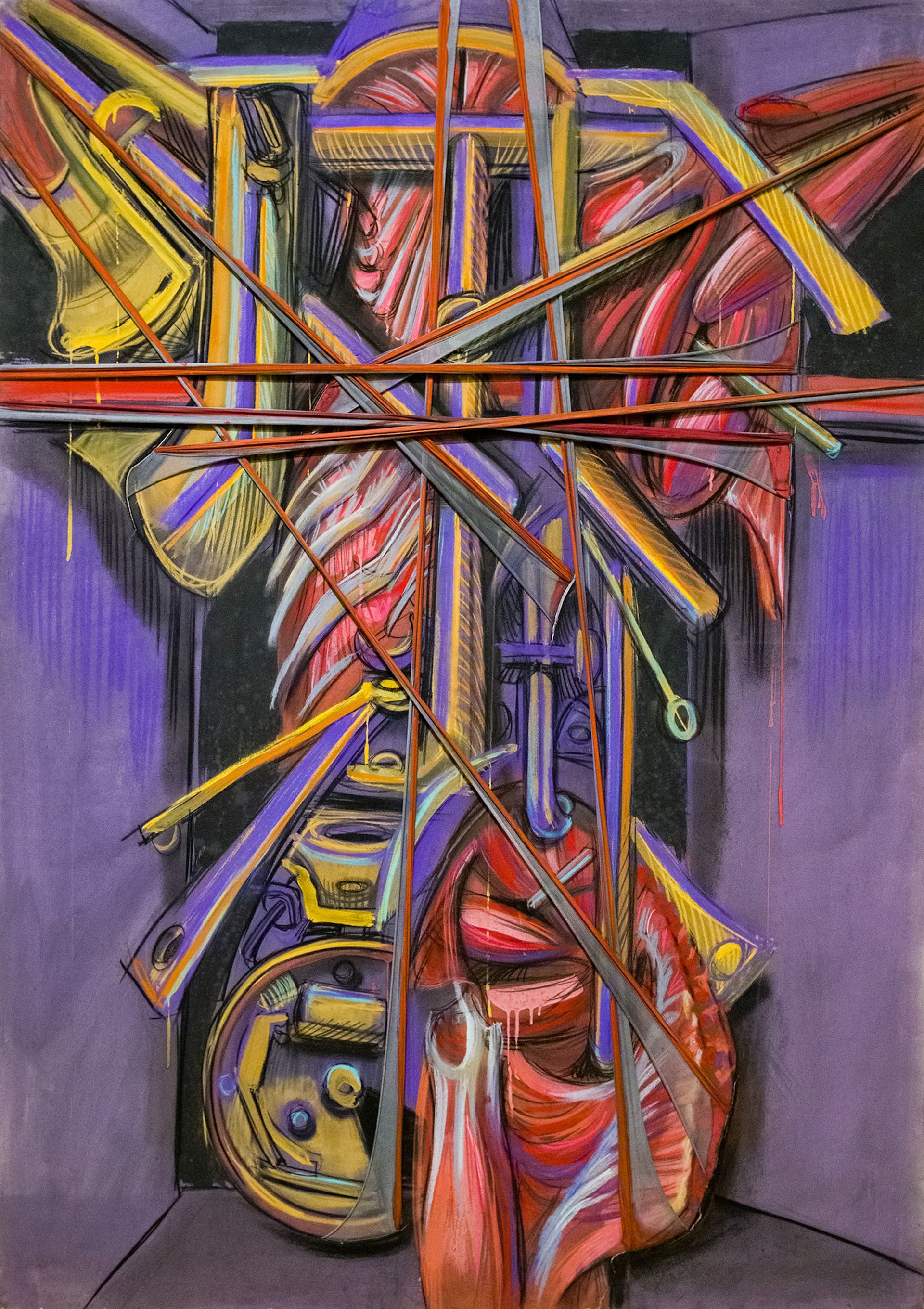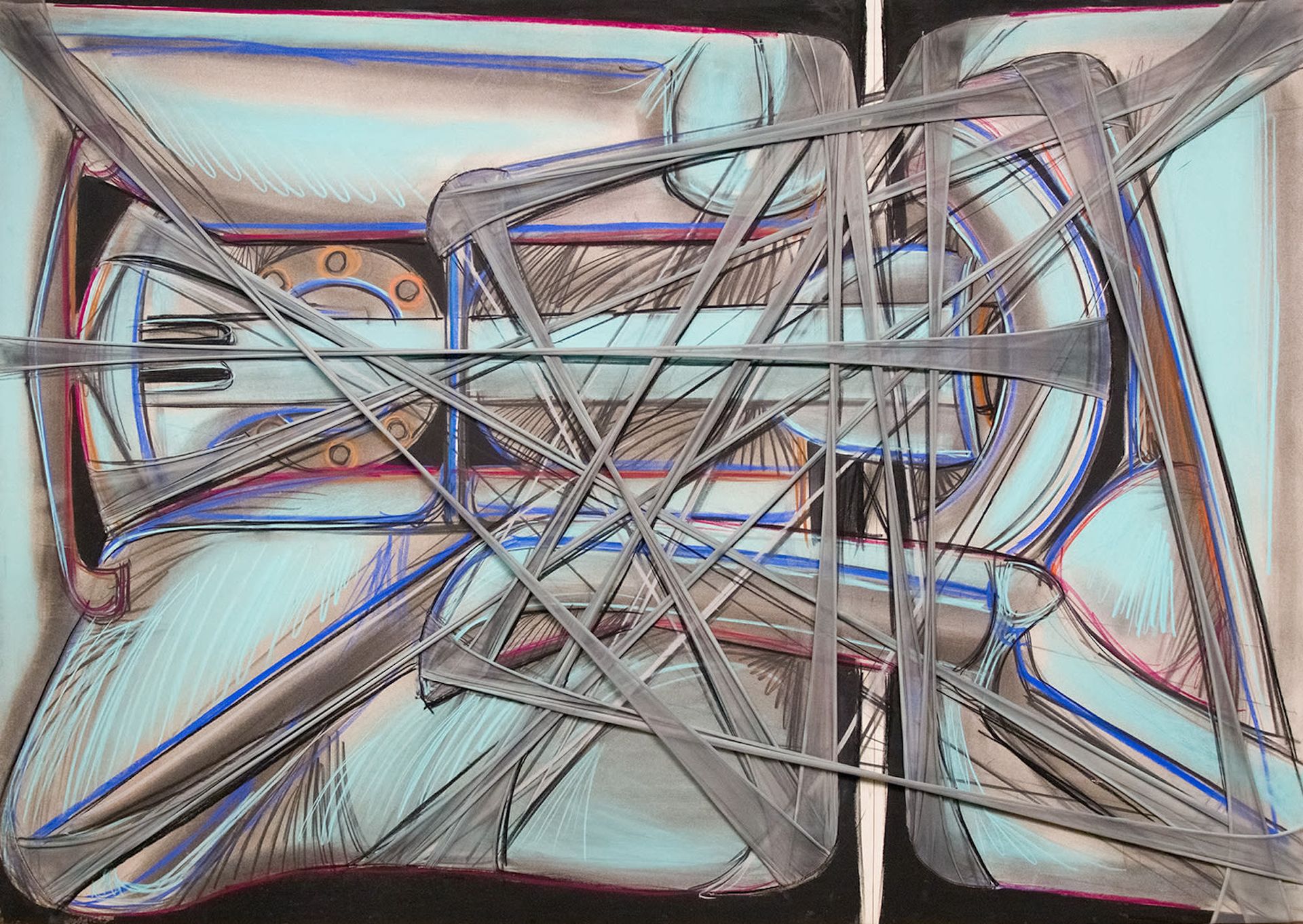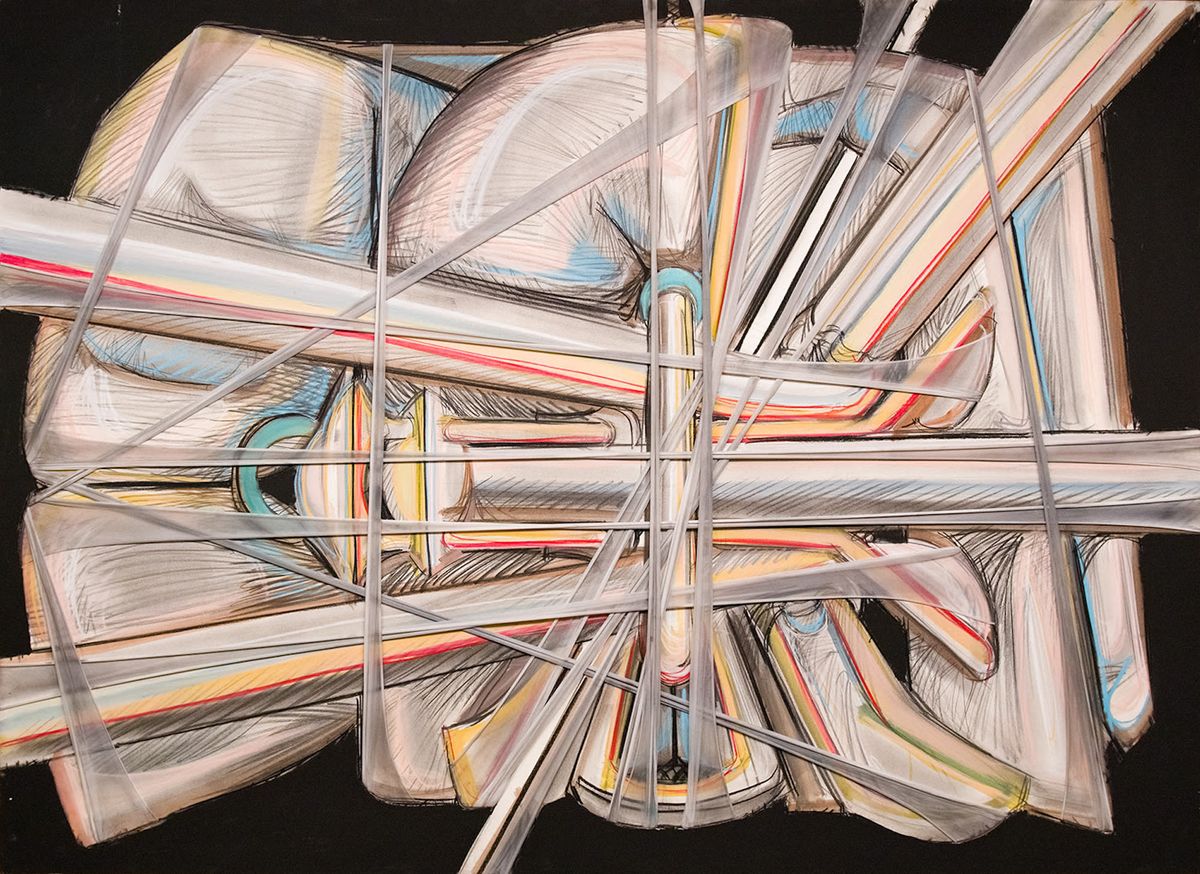What was left of Francis Hines’s artistic legacy—a body of work that includes striking abstract compositions wrapped in stretched fabric—was left poking out of a dumpster near an abandoned barn in Watertown, Connecticut a few years ago. Hines had stored his work in the barn, but after his death in 2016, his oeuvre was deemed fit for a landfill. Luckily, a contractor alerted local mechanic Jared Whipple to the vibrant refuse.
“I pulled it out of this dumpster and I fell in love with it,” Whipple recently told the Associated Press. “My purpose is to get Hines into the history books.”
In the years since, Whipple and the art historian Peter Hastings Falk have worked to raise awareness of and interest in Hines’s work. Their efforts are finally paying off.
On 5 May, Hollis Taggart gallery will open a solo show of Hines’s work, Unwrapping the Mystery of New York’s Wrapper, at its location in Southport, Connecticut, with a smaller selection of works going on view at its space in Manhattan.

Francis Hines, Icon, NY, 1987, Hardpoint pastel on Arches paper mounted on wood with synthetic fabric wraps Courtesy Hollis Taggart
“It was just an absolute fluke,” the gallerist Hollis Taggart says. “They came so close to being lost forever and now here they are being resurrected and brought out to the world. But for someone who happened to spot them and someone who felt very passionate about the work, who didn't have anything to do with the art world but was fascinated and really spent years delving deeply into this, Jared Whipple, and he deserves a lot of credit.”
Though Hines had largely withdrawn from the art world by the time of his death, from the 1960s to the 1980s he was a well-known figure in the New York art world. He showed with Vorpal Gallery for years and created a series of public art interventions around the city that culminated in his iconic wrapping of the arch in Washington Square Park in 1980. His interest in the energy and dynamism of stretched fabric spanned both his large-scale outdoor art and his works on canvas.
“The wrap has nothing to do with any social statement,” Hines told the New York Times in 1979 on the occasion of wrapping an abandoned building in the East Village (a project that was met with some opposition from locals). “I’m interested in the enormous energy that takes place when these forms are under the tension of binding.”

Francis Hines, Untitled, 1984, Hardpoint pastel on Arches paper mounted on wood with synthetic fabric wraps Courtesy Hollis Taggart
Taggart says he first travelled to Connecticut to see the Hines works from Whipple’s trove about two years ago, and was immediately intrigued. This kicked off a long process of research and scholarship that eventually led to the upcoming exhibition.
“That tendency of wrapping and creating surface tension he carried forward into the format of paintings, which is what is so unique and what captured our attention,” Taggart says. “He would make an artwork and create imagery, most of it having to do with automobiles and mechanical things, and then apply on top of that through a unique way these material wrappings over on top of the imagery. And so you end up with a medium that no one has ever seen before.”
- Francis Hines: Unwrapping the Mystery of New York’s Wrapper, 5 May-11 June, Hollis Taggart, Southport, Connecticut.


